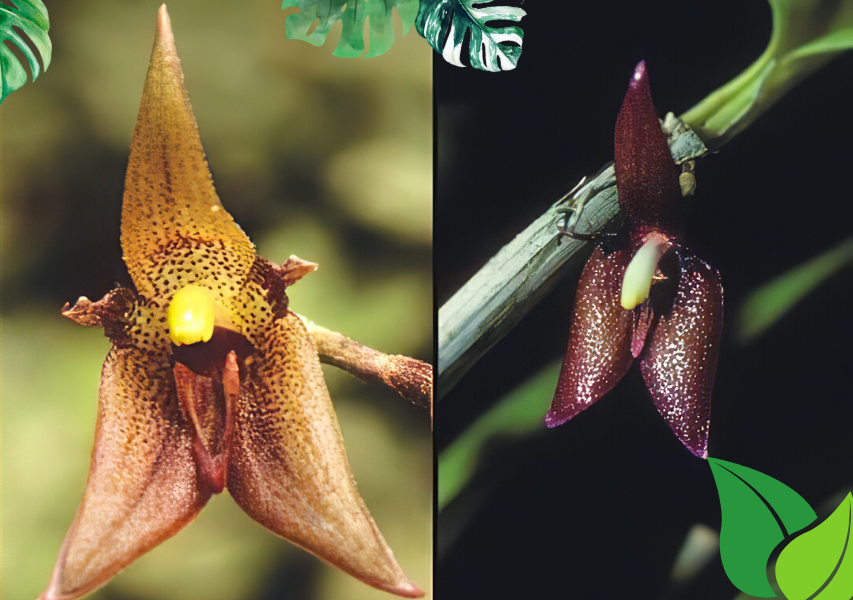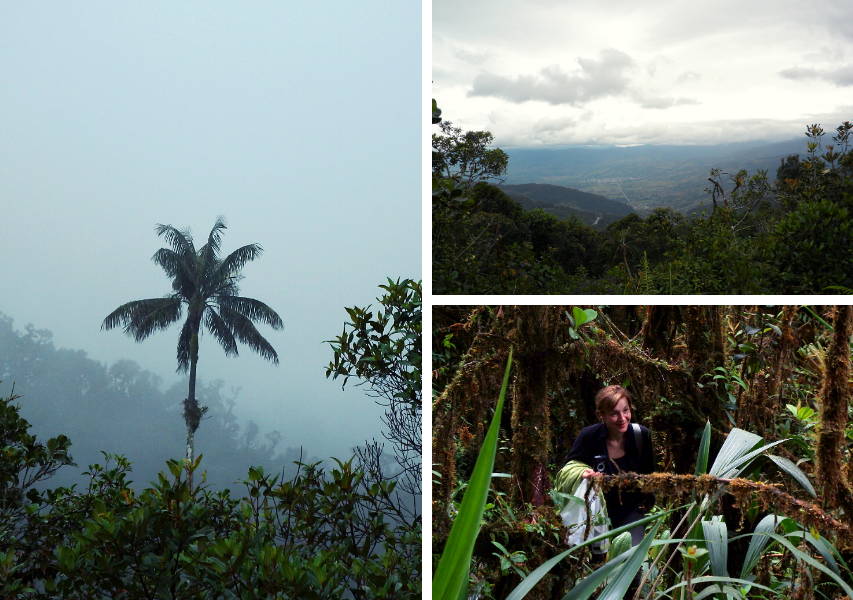Did you know that in the high Andes in Peru there is an orchid strongly associated with Olivia? It’s a majestic beauty: Myoxanthus Oliviae. The name refers to the Olivia Business Centre in gratitude for supporting the activities of the “Biodiversitatis” Foundation aimed at creating a nature reserve with a research station in southern Colombia (Olivia has thus entered the great book of species). A local painter living in the Sibundoy Valley has prepared an illustration of the new species, which you can see here.
Myoxanthus Oliviae from Peru
The newly discovered orchid species belongs to the genus Myoxanthus, whose representatives are found in Central and South America. The orchid grows between stones and on trees in the Peruvian mountains at an altitude of 2700-3100 m above sea level. The reddish-brown flowers of Myoxanthus oliviae grow at the end of the stem, right at the base of a single, leathery leaf. The most distinctive feature of the newly described orchid is its petals, which have an arrow-like shape at the top – such flowers are not found in any other species of Myoxanthus.
How are newly discovered plants named?
A species is considered validly described when it receives a binomial Latin name and its description is published in a scientific journal. The name must follow Latin grammatical rules and can be simple, descriptive (referring to morphological features), geographical (referring to geographical distribution) or commemorative (e.g., given in honor of a person) or “nonsensical.” The first part of the name is a generic name in the form of a noun, and the second is the so-called A species epithet, i.e. a species name, most often in adjectival form.

The first tropical nature reserve with a research station created by Poles
On Earth, there are approx. 6.5 million terrestrial species. An additional 2.2 million inhabit the seas and oceans. So far, however, only 1.2 million species have been cataloged. According to the estimates of the Millennium Ecosystem Assessment, an organization cooperating with over a thousand experts around the world, extinction processes affect 0.01-0.1% of species annually. As a result of climate change, 15-37% of terrestrial organisms may disappear from the Earth’s surface by 2050.
Tropical Nature Reserve
The team of the “Biodiversitatis” Foundation has taken steps to create a nature reserve with a research station and an educational center in southern Colombia. Funds are currently being raised for the purchase of 30 hectares of North Andean mountain forest in the Sibundoy Valley (Putumayo department), which is one of the most diverse tropical ecosystems. On just 1 ha of such a community there are up to 300 different species of vascular plants. The forest is inhabited by m.in. Andean bears and mountain tapirs. The tropical Andes are one of the most species-rich regions in the world. This center of diversity covers less than 1% of the Earth’s surface, concentrating more than 1/6 of all known plants.
The planned reserve covers areas located at an altitude of 2500-2800 m above sea level. The local name of the area, “La Palma”, refers to the magnificent specimen of the Ceroxylon palm tree that stands out against the landscape.
So far, our research in the Sibundoy Valley, which we have been conducting since 2012, has focused on understanding the diversity of orchids. To date, we have discovered about 20 species of orchids in this region that are new to science, m.in. “devil’s orchid” (Telipogon diabolicus). In December 2018, a pilot study was conducted on hummingbirds, and in March 2019 on bat fauna.
The main threat to local diversity is deforestation associated with the intensification of agriculture and the development of road infrastructure.
A research station made … made of plastic
In cooperation with the University of Lodz and the Czech Academy of Sciences, we plan to build a research station in the reserve, which will be the first facility in the region to conduct research on the biodiversity of the North Andean forest, and at the same time enable long-term observations of this still poorly understood ecosystem.
The station is to be built using recycled materials, specifically plastic waste. In The Venture competition (2016), the Colombian company Conceptos Plásticos was voted the best start-up in the world. Oscar A. Méndez’s plant collects and recycles plastic trash to create durable, waterproof homes that are resistant to earthquakes.
Following in the footsteps of Conceptos Plásticos, other companies have emerged in the Colombian market that are currently offering the creation of “green” buildings, m.in. Bloqueplas, Brickarp-Ficidet.
Education and “eco-tourism”
The Foundation believes that the project to create a nature reserve will also have a positive impact on the local community. It intends to involve the local population in activities related to nature conservation and the development of ecotourism in the region. By raising awareness of the importance of biodiversity, especially among young people, it can intensify the conservation and regeneration of native forests. It intends to promote the so-called “Community-based ecotourism”, i.e. tourism that has a positive impact on both the quality of life of people and the protection of natural resources.

With the help of Colombian collaborators, he plans to create short educational trails in the reserve, which will be made available to children from local rural schools. During field classes, she plans to promote the idea of sustainable development among the youngest.
How can you support the project?
- “Adopting a Tree”: https://adoptuj-drzewo.pl/
- By making a donation: http://www.biodiversitatis.com.pl/donate




